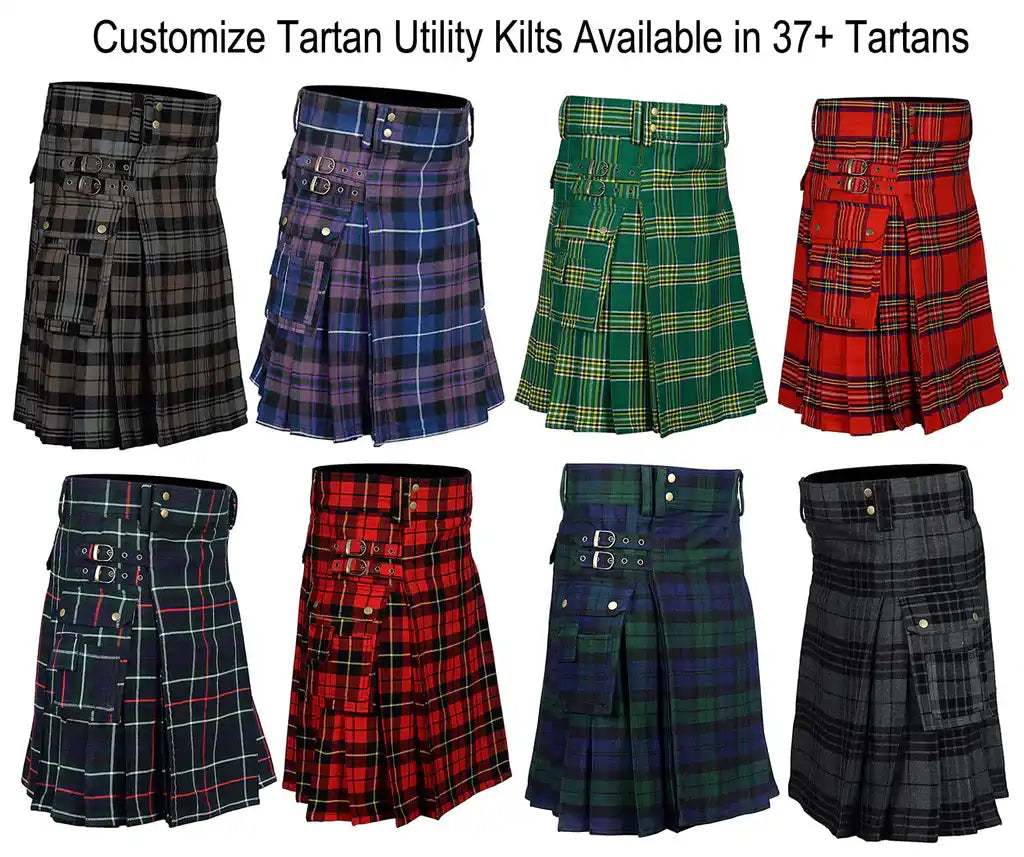The Kilts of Different Clans: A Closer Look at Tartan Patterns
Posted by FAGENT ABRONT
When you think of Scotland, one of the first images that may come to mind is that of a kilt. Kilts are not just a symbol of Scottish pride; they also tell a story of heritage and tradition. Central to this tradition are clan tartans, which have a rich history and unique patterns that identify different clans. In this article, we will take a closer look at tartan patterns, their history, and how they are woven into the fabric of clan kilts, offering a glimpse into the fascinating world of tartan identification.
The History of Tartan
Tartan patterns have a history that spans centuries. The word "tartan" itself is believed to have originated from the French word "tiretaine," which referred to a type of cloth. In Scotland, tartan was traditionally used for clothing, and its patterns began to be associated with specific regions and clans as early as the 16th century.
The concept of clan tartans as we know them today was popularized during the Victorian era when Queen Victoria and Prince Albert took a keen interest in all things Scottish. This royal endorsement sparked a renewed interest in tartan patterns, and clan tartans became a symbol of Scottish identity.
Clan Tartans
Clan tartans are perhaps the most well-known type of tartan pattern. Each Scottish clan, which is essentially a large extended family, has its own unique tartan. These tartans are made up of a combination of colors and stripes, each with its own significance. Clan members proudly wear their tartan kilts to display their heritage and allegiance to their clan.

Details:
- Heavy Weight Durable Acrylic Wool
- Imported
- Button closure
- Men's Tartan Kilts Manufactured with 80% Acrylic & 20% Wool
- Straps use to Adjust the Kilt Fitting as per Personal Hip Sizes
- Standard Drop Length: 24 inches
- Extremely comfortable for long hours wearings and while playing highland games
- Two Cargo Pockets to carry Accessories & Daily Usage Gadgets
- Custom Waist Size and Length orders are very Welcome
Tartan Patterns and Meaning
Tartan patterns are not just random arrangements of colors and stripes; they carry a deeper meaning. The specific combination of colors and the arrangement of stripes can signify a variety of things, such as the region a clan hails from or the occupation of its members. For example, the Black Watch tartan, often associated with the Royal Highland Regiment, features a dark background with blue and green stripes.
Each clan's tartan is distinct, making it possible to identify one's heritage or affiliation at a glance. The variations in pattern can be subtle, but they are significant to those who know how to read them.
Tartan Identification
Identifying tartans can be a fascinating endeavor for those interested in Scottish heritage. There are resources available, such as tartan registries and books, that can help you identify a specific tartan and its associated clan. Additionally, many clan societies and organizations exist to assist people in discovering their tartan and learning more about their clan's history.
In recent years, technology has also played a role in tartan identification. There are apps and websites that allow you to upload a photo of a tartan, and they will attempt to match it to a known tartan pattern, helping you discover your clan heritage with ease.
Conclusion
Tartan patterns are more than just a colorful design on a kilt; they are a living testament to the history and heritage of Scotland. Clan tartans, in particular, serve as a source of pride and identity for those who are part of Scottish clans. The intricate patterns and vibrant colors of tartans continue to captivate and connect people to their Scottish roots, making them a timeless symbol of Scottish culture. Whether you are a Scot by birth or simply admire the rich history of this beautiful country, tartan patterns are sure to leave a lasting impression. So, the next time you see a kilt, take a closer look at the tartan – it may just tell you a story that spans generations.
